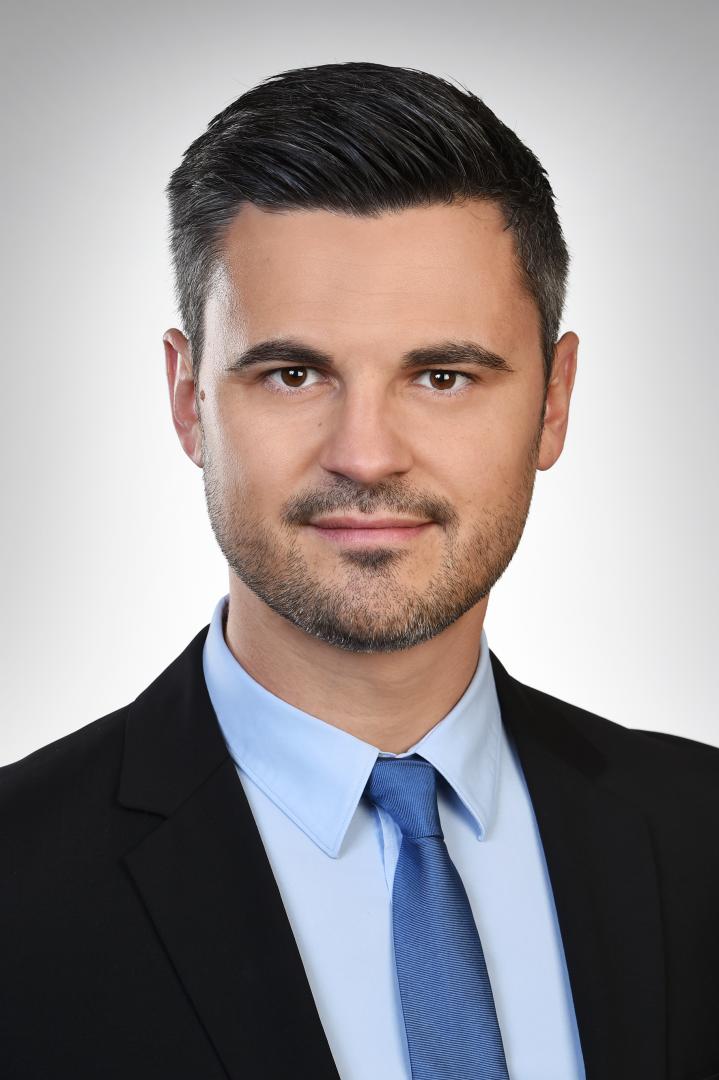Sustainability
Sections
‘The capital market has a key role to play’
Professor Alexander Braun of the University of St Gallen’s Institute of Insurance Economics explains the effects of sustainable investment strategies and investor responsibility.
Do we have a generally accepted valuation method for measuring the impact that financial investments have on global warming?
Alexander Braun: It is difficult to measure a direct link between investments and global warming. After all, financial investments themselves do not emit greenhouse gases. The effect is an indirect one that arises through the provision of capital for companies with carbon-intensive business models. Based on the carbon footprint of the companies in which an investor buys shares or bonds, the investor can roughly estimate the volume of emissions attributable to each individual franc, euro or dollar invested.

Alexander Braun is an associate professor in insurance and capital markets and the director of the Institute of Insurance Economics at the University of St Gallen. His research interests include climate risk and sustainable insurance.
What responsibilities lie with the investor and the company in which the investment is made?
When it comes to the sustainability of investments specifically, the responsibility lies exclusively with the investor. Companies establish their business models and offer their securities on the capital market in connection with financing transactions. Those that invest in companies with business models that are not sustainable cannot justify their actions by passing the blame on to the management.
Would a label help in the transparent classification of sustainable investment products?
Definitely. This is an approach that has been put into practice by various bodies, such as the Morningstar Sustainability Rating and the ESG label from Forum Nachhaltige Geldanlagen (FNG) – with ESG standing for Environmental, Social and Governance. As long as they provide a reasonably accurate picture of the emissions balance of an investment, labels such as these serve as a reliable guide and reduce the search and information costs for investors substantially.
Is there a lack of transparency today?
For the average investor, verifying a company’s emissions intensity is a highly resource-intensive matter. The information that companies supply in their annual financial statements tends to be of only limited value. Relevant information can be ‘hidden’ in the midst of irrelevant information, or showcase projects may signal a sustainable focus that a company does not actually have. In the context of structured investments or entire portfolios of shares and bonds, the verification effort soon becomes impossible to manage.
Does this give direct investments, e.g. in real estate, an advantage over structured investments?
Meaningful comparisons can be made first and foremost within a particular asset class. The question arises as to what the ESG footprint of the companies/business models behind shares or bonds looks like. However, the effect of direct investments in real estate can be measured more clearly. For example, with the financing of an energy-efficient development, it is easy to understand the CO2 savings compared with an old building.
Can the effect of a sustainable investment strategy be proven?
If a large number of investors want to invest sustainably in the future, then the cost of capital for companies with a strong carbon footprint should increase substantially. The first indications of this can already be measured on the capital market. In a paper published recently in the Journal of Financial Economics, economists Patrick Bolton of Columbia University and Marcin Kacperczyk of Imperial College London provide empirical evidence that investors are demanding higher returns for shares in companies with a high emissions intensity.
Is the sustainable impact made by investments in different sectors, e.g. solar and cement plants, comparable?
Ultimately, the comparison can be made only on the basis of actual CO2 emissions. Compared with the solar farm, the cement plant clearly has more of an initial negative impact on the environment. In this respect, the economic and social objective must be to find a way to manufacture cement in a climate-neutral way in the future. If investors decide against investing in the cement plant due to its currently poor environmental footprint, the capital costs will increase. The market mechanism then results in cement plants that cannot reduce their emissions substantially becoming uneconomical and dropping out of the market. But since society has a need for cement, it becomes worthwhile for the remaining cement plants to invest in new production processes with low CO2 emissions.

If a large number of investors want to invest sustainably in the future, then the cost of capital for companies with a strong carbon footprint should increase substantially. The first indications of this can already be measured on the capital market.
Investors who withdraw from a coal-fired power plant, for example, improve their carbon footprint. But as long as the coal-fired power plant can find other investors, its CO2 emissions will not be reduced. Does that make sense?
An investment strategy has to be assessed always with the investor’s preferences taken into account. If an investor derives a non-monetary benefit from sustainable investments or is worried about the transition risks associated with non-sustainable investments, a focus on ESG-compliant investments is a sensible decision from its point of view. The fact that after the investor sells certain securities, other investors take its place and use their capital to support non-sustainable business models does nothing to change this.
Is it possible to say whether impact investment is more effective than an exclusion approach?
By definition, impact investors want to make an impact. In this respect, investments that can be used to actively drive change are more important here than in other investment categories. This is, however, a forward-looking ‘ex ante’ approach. I am not currently aware of any widespread standard method to measure and compare the impact achieved by various investments as part of a retrospective (‘ex post’) assessment.
How do the different approaches perform financially?
As the topic as a whole has gained significant momentum only over the last three years, the data series available for a sound scientific analysis is still relatively short. Nevertheless, initial evidence is already available on the performance of sustainable strategies relative to standard investments. In addition to the article by Bolton and Kacperczyk that I mention above, a paper by Brad Barber, Adair Morse and Ayako Yasuda, which also appeared in the Journal of Financial Economics in January 2021, is particularly worthy of mention. The authors demonstrate that venture capital funds with an impact focus generate significantly lower returns than their conventional counterparts.
How strong is the risk of a bubble emerging due to trending sustainability topics?
I do not see any signs of a bubble at the moment. However, larger capital inflows into sustainable funds have been seen in recent years. Evidence of this can be found in a paper published by my colleague at the University of St Gallen Manuel Ammann and co-authors, which was published in the journal European Financial Management in 2018.
Do sustainable investments deliver on their promises?
Yes, they certainly do, as long as they are selected carefully with all the available information taken into account. The capital market has a key role to play in the transition to a sustainable economy and society. If companies that are not sustainable can no longer secure financing, or are able to do so only at a very high cost of capital, their business models become uneconomical. This creates a strong incentive to adopt a sustainable approach.
About
Alexander Braun is an associate professor in insurance and capital markets and the director of the Institute of Insurance Economics at the University of St Gallen. His research interests include climate risk and sustainable insurance.
Help for asbestos victims – a social responsibility
A commentary by Urs Berger
Asbestos is resistant to heat and aggressive chemicals, highly elastic and has high electrical and thermal insulating properties. These properties once made it an appealing and valuable material for industry and technology. This is why it was in such widespread use in these areas: In sheets or compounds for fire protection, in brake pads and clutch discs in vehicle construction, and in seals designed to withstand thermal or chemical strain.
Unfortunately, the risk to human health associated with asbestos processing was discovered only at a late stage. Asbestos breaks down into microscopically fine fibres and anyone who inhales them runs the risk of developing malignant mesothelioma, a malignant tumour in the lungs or abdomen. It takes 20 years, and often up to 45 years or more, for this usually fatal disease to appear. Although the manufacture and import of asbestos has been banned in Switzerland since 1 March 1990, the statistics suggest that it is still responsible for about 200 people becoming ill every year.
Due to the long period between the root cause and the outbreak, most compensation claims by the individuals affected were statute-barred. This prompted federal councillor Alain Berset to convene a round table to find a solution to meets everyone’s needs with representatives from the corporate sector, associations, victims’ associations, lawyers, trade unions, the Swiss National Accident Insurance Fund (Suva) and the federal administration. The EFA Foundation Compensation Fund for Asbestos Victims, established in 2017, is the result of this round table. It aims to provide the victims and their families with assistance quickly and with minimal red tape – regardless of whether the illness arose from a personal or work-related handling of the material.
The EFA Foundation has developed a care service together with the Vaud, Zurich and Ticino branches of the Swiss Lung Association. At the locations in Zurich, Lausanne and Bellinzona, specialists advise victims, their relatives and also interested individuals on all questions that arise in connection with an asbestos-related disease. Victims can apply for support at the service centre. the prerequisite is that they have been diagnosed with an asbestos-induced mesothelioma caused in Switzerland since 2006. This option is also open to victims’ closest relatives.
The foundation is financed by voluntary contributions from business, industry, trade, associations and other institutions, as well as private individuals. Of the CHF 100 million discussed by the round table, a total of around CHF 25 million had been paid in by the end of 2020. The Swiss Insurance Association, SBB and numerous larger and smaller rail companies have joined forces to make a substantial contribution to the financing of the foundation via the public transport association.
The foundation will need another CHF 50 million by 2030. If the EFA Foundation runs out of funds, it can no longer pay compensation to asbestos victims. They would then have to claim support via the old age and survivors’ insurance (OASI)/invalidity insurance (IV) scheme, and possibly sue for additional compensation through the
courts – provided there is a liable party. They have neither the time nor the financial means to do this due to their illness. This approach is also expensive for the defendants and entails a loss of reputation. As a result, support is urgently needed. Everyone benefits from the EFA Foundation being able to continue its work.
The foundation has reached an agreement with federal councillors Berset and Guy Parmelin to invite representatives of the sectors and associations concerned to solidarity talks. The aim is for them to remind their members of their social responsibility and motivate them to donate to the EFA Foundation.

Urs Berger is chairman of the Board of Directors of Die Mobiliar and president of the EFA Foundation Compensation Fund for Asbestos Victims. He was president of the SIA from 2011 to 2017.
Transparency needs comparable criteria
State Secretary Daniela Stoffel, State Secretariat for international financial issues, talks about the role of sustainability for the Swiss financial centre.
What role does sustainability play in ensuring a competitive Swiss financial centre?
Daniela Stoffel: In its strategic realignment for future financial market policy of December 2020, the Federal Council made it clear: sustainable growth in all its aspects is the only future-proof development path for Switzerland as a financial centre. The focus on sustainability is not only an increasing expectation of the population, but also an opportunity to strengthen the importance of our financial centre.

State Secretary Daniela Stoffel, State Secretariat for international financial issues, talks about
the role of sustainability for the Swiss financial centre.
You say sustainability is an opportunity for Switzerland as a financial centre. Where does Switzerland stand in this respect in an international comparison?
Due to the size and quality of its financial centre, and its high standards of research and education and regulatory requirements, Switzerland is extremely well equipped to become one of the world’s leading hubs in sustainable financial services. However, the climate tests conducted recently by the federal authorities at companies in the banking and insurance sectors show that there is still room for improvement. That is a good incentive.
Switzerland supports the work of the international Task Force on Climate-Related Financial Disclosures established by the Financial Stability Board (FSB). Is transparency the most important issue?
Transparency on environmental risks and impacts is a prerequisite for financial markets to function and thrive in the long run. This transparency can be achieved only through internationally comparable criteria. This is why we are involved in numerous forums for global transparency criteria and examination of national implementation projects.
Where do you see the next challenges in this area?
In order for the risks to become more clearly visible and tangible for financial market players, the external costs of environmental and climate damage caused by economic activity have to be internalised in the real economy. Specifically, an adequate global price for CO2 has to be defined.
Do fintech companies play a central role in a sustainable financial centre?
Fintech companies are a key driver of innovation, allowing the data required to make financial decisions to be generated cost-effectively, faster and more accurately. As well as banks and insurance companies, they are an important pillar of a sustainable financial centre.
Annual Report 2020
-
The association in the past year
Read more
-
Insurability of top risks
Read more
-
Sustainability
Read more
-
Added value of supplementary hospital insurance
Read more
-
Fair retirement provision for all generations
Read more
-
Working world of the future
Read more
-
Recognise new dangers
Read more
-
Future-proof insurance regulation
Read more
-
Miscellaneous
Read more